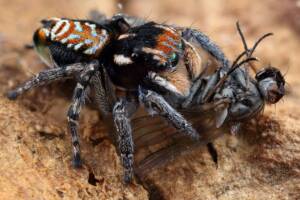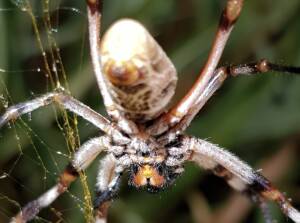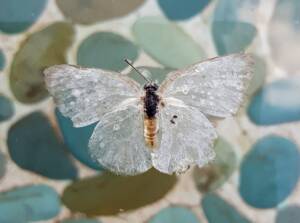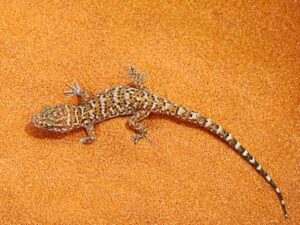There are two species of Marsupial moles in the Family Notoryctidae, both species are found in the interior of Australia.
- Northern Marsupial Mole (Notoryctes caurinus)
- Southern marsupial mole (Notoryctes typhlops)

The Aboriginal name for the marsupial mole varies according to the locality in which it is found. In central Western Australia it is referred to as the blind sand burrower, ‘Arra-jarra-ja’ or ‘Kakarratul’ for the northern species (N. caurinus) and ‘Itjaritjari’ for the southern species (N. typhlops). Elsewhere in the southern Northern Territory, it is known as ‘Oor quamata’; see also Burbidge et al. (1988) for other aboriginal names.
Known as Itjaritjari to Anangu, The marsupial mole Minyma Itjaritjari is an important ancestral creature to the Anangu, an ancestral being that lived in a cave in the side of Uluru. This is the same valley as the Mala people and being friendly with the Mala women, it is said she would often come out of her cave to watch the children play.

The marsupial mole, a pouched species like many other marsupials, is about 10 – 15 cm long, weighing 40 – 60 grams and has soft, fine fur of a cream-yellow colour. It has no external sign of eyes, although there is a pigment spot and degenerate remnants of eyes hidden under the skin, and no sign of external ear pinnae but there are distinct ear openings buried beneath the fur and the ears are presumably functional for hearing. The nose (or muzzle) is a horny shield, or pad which is divided into a upper and lower portion by a transverse groove. The nostrils are small and slit like. The short tail, about 2 cm long, is encircled with rings and terminates in a horny knob; the tail leaves an undulating trail in the sand when the mole walks on the surface. The fore- and hindlimbs, and internal morphology, clearly indicate that the marsupial mole is a strong burrower.

There are some great images of the marsupial mole on the following links:
- Australian Geographic, The southern marsupial mole is preposterous, even by Australian standards, Contributor Bec Crew
- YouTube, Itjaritjari – Southern Marsupial Mole burrowing, Christopher Watson
- Scientific classification
- Kingdom: Animalia
- Phylum: Chordata
- Class: Mammalia
- Infraclass: Marsupialia
- Order: Notoryctemorphia
- Family: Notoryctidae
- Genus: Notoryctes
- Species:
Notoryctes typhlops
Notoryctes caurinus
Footnote & References
- Marsuplial Moles (Notoryctes) by Philip Withers and Graham Thompson, http://www.zoology.uwa.edu.au/staff/pwithers/marsupialmole/Default.htm (please note that this link is no longer active)
- References: Bolam (1927), Stirling (1891), Gadow (1892), Johnson (1983), Johnson and Walton (1989)
- The southern marsupial mole is preposterous, even by Australian standards, Contributor Bec Crew, Australian Geographic, 18 July 2019, https://www.australiangeographic.com.au/blogs/creatura-blog/2019/07/the-southern-marsupial-mole-is-preposterous-even-by-australian-standards/
- The marsupial mole: an enduring enigma, by Joe Benshemesh, 14 September 2010, Australian Geographic, https://www.australiangeographic.com.au/topics/wildlife/2010/09/the-marsupial-mole-an-enduring-enigma/
- Southern Marsupial Mole (Notoryctes typhlops) – Fact sheet, https://www.environment.gov.au/resource/southern-marsupial-mole-notoryctes-typhlops
- Fauna of Australia – 23. Notoryctidae, Ken A Johnson & Dan W Walton, https://www.environment.gov.au/system/files/pages/a117ced5-9a94-4586-afdb-1f333618e1e3/files/23-ind.pdf
- Marsupial mole, https://en.wikipedia.org/wiki/Marsupial_mole (last visited Jan. 5, 2021).
- Withers, P., Thompson, G. G., & Seymour, R. S. (2000). Metabolic physiology of the north-western marsupial mole, Notoryctes caurinus (Marsupialia: Notoryctidae). Australian Journal of Zoology, 48, 241-258. https://www.publish.csiro.au/zo/ZO99073
- Threatened Species of the Northern Territory: Southern Marsupial Mole / Itjaritjari (Notoryctes typhlops), https://nt.gov.au/__data/assets/pdf_file/0016/205522/southern-marsupial-mole.pdf (link to site not active)
- Information can be found with a Google search with the following phrase: Southern Marsupial Mole / Itjaritjari (Notoryctes typhlops) pdf
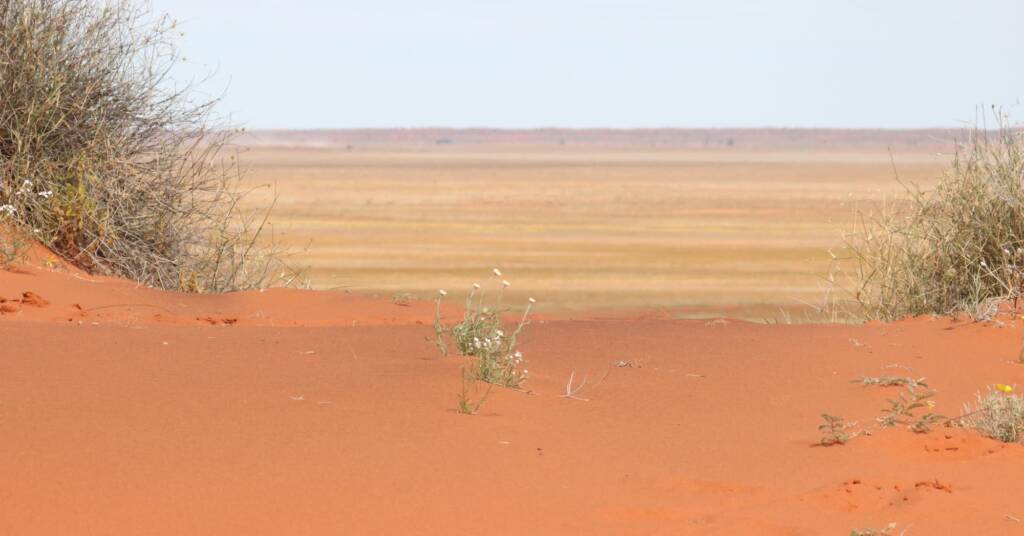
MarsupialsGreater Bilby Koala Marsupial Mole Numbat Quokka Western Quoll Yellow-Footed Antechinus
MacropodidaeKangaroo, Wallaroo, Euro, Wallaby Kangaroos Black-footed Rock Wallaby Eastern Grey Kangaroo Red Kangaroo Wallaroo Western Grey Kangaroo
FaunaFauna Index Arachnida (Arachnids) Bats (Chiroptera) Birds Camel Chilopoda Crustacea Dingo Frogs Gastropoda Horse Hyrtl’s Catfish Insects Macropodidae Mammalia Marsupials Monotreme Reptiles Rodentia (class Mammalia) Spiders Spinifex Hopping Mouse Ticks



